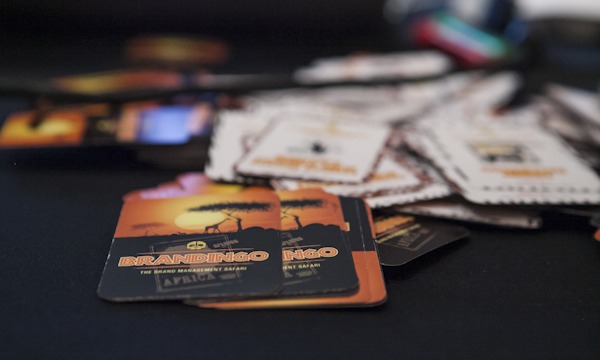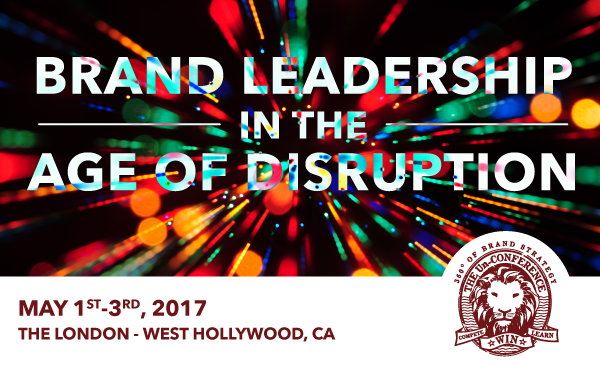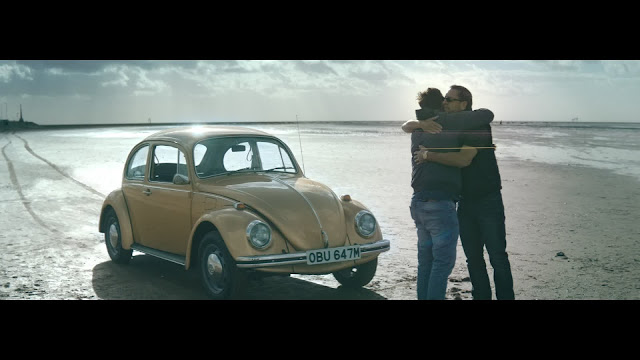
Economics is about deciding what’s valuable.
After nearly a decade that saw the global re-set and the recent uncertainty of a new American President’s impact, people everywhere are re-evaluating and sorting out what is valuable in their lives and what is not. What the world needs now is to have more value added to it. And that’s what brands must do — add value to the world — if they want to lead the market in the age of disruption.
Creating new value is fundamental to the healthy functioning of our free-market economy. Like the natural law of gravity, creating new value is the natural law of increase. People are always seeking an increase to their lives — wanting to be a higher and more fuller expression of themselves. As marketing oriented leaders and professionals, when we have the opportunity to serve people well, we find greater meaning and satisfaction in our own life experience.
For 50 marketers that are focused on creating new value for those people most important to their future, The Blake Project and Branding Strategy Insider have designed a uniquely powerful experience for brand leadership in the age of disruption. We call it The Un-Conference: 360 Degrees of Brand Strategy for a Changing World.
It’s unlike any other conference you’ve attended before:
- Everyone in the room is an expert and gains from the sum of the expertise in the room.
- Our competitive learning format is fun, energized and impactful.
- The walls are down, there are no podiums or stages, there is no hierarchy – your uniform is jeans.
- The focus is on learning outcomes, not ticket sales.
- Small is powerful, with only 50 marketers participating in hands on learning.
- As in your marketplace, some will win, some will lose, all will learn.

No Attendees. Only Participants.
The best pathway for learning is through participation, not observation. The Un-Conference: 360 Degrees of Brand Strategy for a Changing World will challenge your thinking about brands and brand management. To do that, we’ll put you on a team of 10 and offer you opportunities to compete, lead and learn alongside other marketers in a unique environment. The challenges you’ll tackle are based on and influenced by the actual issues that you and other participants are facing.
In May of 2017, our 5th event, we are focused on: Disruptive Marketing Trends, Building Emotional Connections, Encoding Brands In The Mind, Brand Storytelling, Brand Leadership, Digital Strategy, Customer Experience, B2B Brand Strategy and more.

It all takes place at The London Hotel in West Hollywood, California May 1 – 3, 2017.
Our schedule…
Monday, May 1st – Kickoff Mixer: 7- 9pm at The London Hotel Rooftop Pool
Tuesday, May 2nd – Day 1: 8am – 5pm, at The London Hotel / 6:30pm – ? Team building event and dinner
Wednesday, May 3rd – Day 2: 8am – 5pm, at The London Hotel

Who Should Participate?
We have reserved these two days (and a kickoff mixer on the evening of the 1st) for 50 senior B2C and B2B marketers who see professional growth and value creation as a mandate for success and who seek a learning experience superior to last century’s format of marketing conferences:
-Marketing oriented leaders
-Marketing professionals (brand managers, product managers, directors, vice presidents, CMO’s, brand strategists etc.)
-Advertising agency professionals (account executives, planners, creatives, agency heads)
-Marketers facing brand strategy issues
-Marketers seeking a competitive advantage
-Professionals in charge of brand building, brand management, human resources
-Professional brand consultants, digital consultants and researchers
-Marketers who prefer participation over observation
-Marketers who don’t believe that last century’s format of marketing conferences advances them as leaders.
Every year a wide range of marketing oriented leaders and professionals from around the world join us representing startups, emerging, regional, national and global brands. Past participants include AAA, Bayer, Bloomberg, Humana, Land O’ Lakes, Liberty Mutual, Pilot/Flying J, RJ Reynolds, TD Ameritrade, GlaxoSmithKlein, Wounded Warrior Project, Monsanto, Ogilvy, Kawasaki, GE and many more.
Only 50 marketers can participate. To secure a spot for you or your group at The Un-Conference: 360 Degrees of Brand Strategy for a Changing World call me directly in Los Angeles at 813-842-2260. Or simply email me.
Special pricing for MENG / Marketing Executives Group and American Marketing Association Members.
I do hope you can join us.
Sincerely,
Derrick Daye for The Un-Conference, Branding Strategy Insider and The Blake Project





















